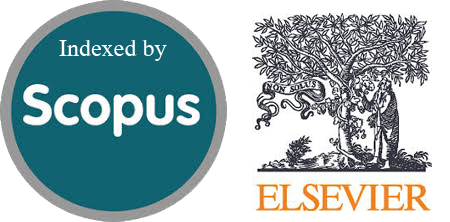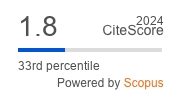Comparative Analysis of Forensic Software on Android-based MiChat using ACPO and DFRWS Framework
Abstract
Instant Messaging (IM) is a popular and widely used communication application. MiChat is a multi-platform instant chat service with several features that can attract various segments of the population to use it as a tool for committing cybercrimes. A forensic framework and several forensic tools are needed to carry out physical evidence investigation procedures. This study focuses on analyzing and comparing the forensic tools used during the research, based on defined digital evidence parameters and applying a specific mobile forensic framework. The results show that Final Mobile Forensic has the highest ability to obtain digital evidence and can recover deleted data, while Oxygen Forensic Detective has advantages in terms of audio, images, and video but cannot recover data. The best framework is DFRWS, which has the most complete stages so that it can support the investigation process. The best digital evidence is text chat and contacts, which can be used to support valid legal claims.
Downloads
References
I. Riadi, A. Yudhana, and M. C. F. Putra, “Forensic Tool Comparison on Instagram Digital Evidence Based on Android with The NIST Method,” Sci. J. Informatics, vol. 5, no. 2, pp. 235–247, 2018, doi: 10.15294/sji.v5i2.16545.
S. O’Dea, “Number of smartphone subscriptions worldwide from 2016 to 2027,” www.statista.com, 2022. https://www.statista.com/statistics/330695/number-of-smartphone-users-worldwide/ (accessed Jul. 07, 2022).
I. Riadi, S. Sunardi, and M. E. Rauli, “IWhatsApp Digital Evidence identification on Proprietary Operating Systems Using Live Forensics,” J. Tek. Elektro, vol. 10, no. 1, pp. 18–22, 2018, doi: 10.15294/jte.v10i1.14070.
A. Menahil, W. Iqbal, M. Iftikhar, W. Bin Shahid, K. Mansoor, and S. Rubab, “Forensic Analysis of Social Networking Applications on an Android Smartphone,” Wirel. Commun. Mob. Comput., vol. 2021, 2021, doi: 10.1155/2021/5567592.
M. R. Setyawan, A. Yudhana, and A. Fadlil, “Data Acquisition On Messenger Skype Using The National Institute Of Justice Method,” Syst. Inf. Syst. Informatics J., vol. 5, no. 2, pp. 13–18, Mar. 2020, doi: 10.29080/systemic.v5i2.724.
R. Umar, I. Riadi, and B. F. Muthohirin, “Acquisition of Email Service Based Android Using NIST,” Kinet. Game Technol. Inf. Syst. Comput. Network, Comput. Electron. Control, vol. 3, no. 3, pp. 263–270, 2018, doi: 10.22219/kinetik.v3i4.637.
I. Riadi, R. Umar, and A. Firdonsyah, “Identification Of Digital Evidence On Android’s Blackberry Messenger Using NIST Mobile Forensic Method,” Int. J. Comput. Sci. Inf. Secur., vol. 15, no. 5, pp. 155–160, 2017, [Online]. Available: https://www.researchgate.net/publication/317620078
A. Sanchez, N. Han, and P. Jones, “Mexico: Organized Crime and Drug Trafficking Organizations Related papers T he St rat egic Implicat ions of t he Cárt el de Jalisco Nueva Generación,” 2015. [Online]. Available: www.crs.gov
Y. F. Amilia and D. Wahyudi, “Investigating the Crime of Prostitution Online,” vol. 2, pp. 45–56, 2021, doi: https://doi.org/10.22437/pampas.v2i1.12413.
Numbeo, “No Crime Index by Country 2022 Mid-Year,” www.numbeo.com, 2022. https://www.numbeo.com/crime/rankings_by_country.jsp (accessed Jul. 07, 2022).
M. Rauf, A. Prasetio, S. Sos, and M. Si, “Communication Activities Match Search Applications on Michat Media,” in e-Proceeding of Management, 2021, pp. 1559–1571.
G. Fanani, I. Riadi, and A. Yudhana, “Michat Application Forensic Analysis Using Digital Forensics Research Workshop Method,” vol. 6, no. 2, pp. 1263–1271, 2022, doi: 10.30865/mib.v6i2.3946.
K. D. O. Mahendra and I. K. Ari Mogi, “Digital Forensic Analysis Of Michat Application On Android As Digital Proof In Handling Online Prostitution Cases,” JELIKU (Jurnal Elektron. Ilmu Komput. Udayana), vol. 9, no. 3, p. 381, Feb. 2021, doi: 10.24843/JLK.2021.v09.i03.p09.
Y. Pasha, “Nyambi Trades Drugs, Police Arrested Prostitutes in MiChat,” jabar.idntimes.com, 2020. https://jabar.idntimes.com/news/jabar/bagus-f/nyambi-dagang-narkoba-psk-di-michat-ditangkap-polisi (accessed Jul. 08, 2020).
L. Utama and A. Hari, “North Sulawesi Police Unravel Human Trafficking Through the MiChat Application,” viva.co.id, 2019. https://www.viva.co.id/berita/nasional/1182565-polda-sulut-bongkar-perdagangan-manusia-lewat-aplikasi-michat (accessed Jul. 08, 2022).
A. Anwar, “Sisca Icun Sulastri’s murder, this is how MiChat is abused,” Tempo.co, 2018. https://metro.tempo.co/read/1158644/pembunuhan-sisca-icun-sulastri-begini-michat-disalahgunakan (accessed Jul. 08, 2002).
S. Maulana, “The Story of a Man in Samarinda, Fooled by Open BO MiChat to Lose Millions of Rupiah,” suarakaltim.id, 2021. https://kaltim.suara.com/read/2021/04/14/164208/kisah-pria-di-samarinda-tertipu-open-bo-michat-hingga-rugi-jutaan-rupiah?page=all (accessed Jul. 08, 2022).
Humas Polres Pessel, “Spreading Immoral Documents via MiChat, 19-year-old Student Arrested by Ditreskrimsus West Sumatra Police,” Kriminal, 2022. https://pesisirselatan.sumbar.polri.go.id/index.php/2022/04/26/sebarkan-dokumen-asusila-lewat-michat-mahasiswa-19-tahun-diamankan-ditreskrimsus-polda-sumbar/ (accessed Jul. 08, 2022).
O. Osho and S. O. Ohida, “Comparative Evaluation of Mobile Forensic Tools,” Int. J. Inf. Technol. Comput. Sci., vol. 8, no. 1, pp. 74–83, 2016, doi: 10.5815/ijitcs.2016.01.09.
S. Singh and S. Kumar, “Qualitative Assessment of Digital Forensic Tools,” Asian J. Electr. Sci., vol. 9, no. 1, pp. 25–32, 2020, doi: 10.51983/ajes-2020.9.1.2372.
A. N. Ichsan and I. Riadi, “Mobile Forensic on Android-based IMO Messenger Services using Digital Forensic Research Workshop (DFRWS) Method,” Int. J. Comput. Appl., vol. 174, no. 18, pp. 34–40, Feb. 2021, doi: 10.5120/ijca2021921076.
H. H. Lwin, W. P. Aung, and K. K. Lin, “Comparative Analysis of Android Mobile Forensics Tools,” 2020 IEEE Conf. Comput. Appl. ICCA 2020, 2020, doi: 10.1109/ICCA49400.2020.9022838.
S. Dogan and E. Akbal, “Analysis of mobile phones in digital forensics,” 2017 40th Int. Conv. Inf. Commun. Technol. Electron. Microelectron. MIPRO 2017 - Proc., pp. 1241–1244, 2017, doi: 10.23919/MIPRO.2017.7973613.
F. E. Salamh, U. Karabiyik, M. K. Rogers, and E. T. Matson, “A comparative uav forensic analysis: Static and live digital evidence traceability challenges,” Drones, vol. 5, no. 2, 2021, doi: 10.3390/drones5020042.
R. Padmanabhan, K. Lobo, M. Ghelani, D. Sujan, and M. Shirole, “Comparative analysis of commercial and open source mobile device forensic tools,” 2016 9th Int. Conf. Contemp. Comput. IC3 2016, 2017, doi: 10.1109/IC3.2016.7880238.
I. Riadi, R. Umar, and M. A. Aziz, “Web Forensics Instant Messaging Service Using Association of Chief Police Officers (ACPO) Methods,” Mob. Forensics, vol. 1, no. 1, p. 30, Sep. 2019, doi: 10.12928/mf.v1i1.705.
I. Zuhriyanto, A. Yudhana, and I. Riadi, “Comparative analysis of Forensic Tools on Twitter applications using the DFRWS method,” J. RESTI, vol. 1, no. 3, pp. 829–836, 2017, doi: https://doi.org/10.29207/resti.v4i5.2152.
Copyright (c) 2023 Jurnal RESTI (Rekayasa Sistem dan Teknologi Informasi)

This work is licensed under a Creative Commons Attribution 4.0 International License.
Copyright in each article belongs to the author
- The author acknowledges that the RESTI Journal (System Engineering and Information Technology) is the first publisher to publish with a license Creative Commons Attribution 4.0 International License.
- Authors can enter writing separately, arrange the non-exclusive distribution of manuscripts that have been published in this journal into other versions (eg sent to the author's institutional repository, publication in a book, etc.), by acknowledging that the manuscript has been published for the first time in the RESTI (Rekayasa Sistem dan Teknologi Informasi) journal ;








